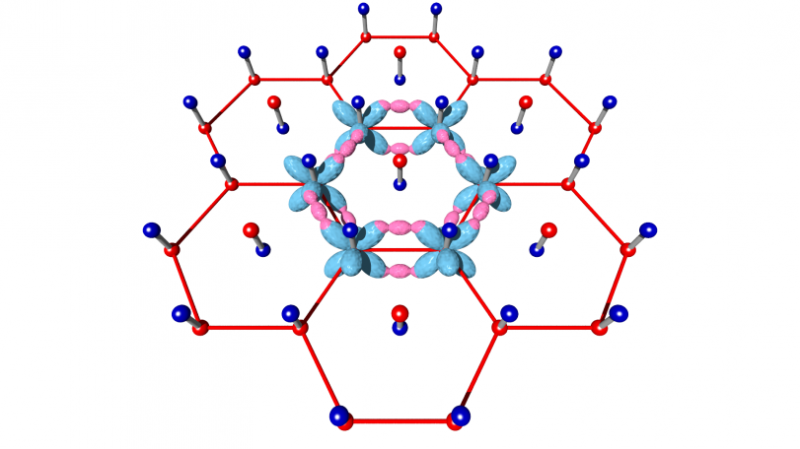A key to development of materials for the foundation of quantum computers

An international research group observed a state in copper oxides in which orbital degrees of freedom did not freeze at low temperatures and electrons fluctuated due to quantum fluctuations. The group also clarified the time scale of these quantum fluctuations in multifrequency electron spin resonance (ESR) experiments in a strong magnetic field for the first time.
Electrons have three degrees of freedom: spin, orbital, and electric charge. In condensed-matter physics, the study of aggregates formed by multiple atoms and ions, such as crystals and glass, the realization of a state of "quantum spin liquid" in which spin degrees of freedom do not freeze even at very low temperatures is thought to be one of the goals in the field.
In perovskite type copper oxide, a typical crystal structure of metal oxide, the possibility of achieving a quantum spin orbital liquid state (figure 1) in which both spin degrees of freedom and orbital degrees of freedom do not freeze even at very low temperatures was suggested. Joint research using high-quality samples, in which this group was involved, elucidated that Jahn-Teller distortion, which shows that the orbital degree of freedom freezes, did not take place at low temperatures. However, there was no direct evidence of a quantum spin orbital liquid state, such as an observation of the orbital quantum dynamics in the spin.
Masayuki Hagiwara, Professor at Osaka University, Takehito Nakano, Assistant Professor and Yasuo Nozoe, Professor at Osaka University, in collaboration with Satoru Nakatsuji, Professor at the University of Tokyo and Yibo Han, Associate Professor at Hauzhong University of Science and Technology, examined high-quality single crystals of perovskite-type copper oxide (6H-Ba3CuSb2O9) using an electron spin resonance (ESR) apparatus with a wide frequency range at a strong magnetic field facility in Osaka University. As a result, while at low frequency, orbital degrees of freedom did not freeze at extremely low temperatures, but at high frequency, these orbital degrees of freedom was observed to freeze.
These results have clarified that the time scale of orbital quantum fluctuations is about 100 ps below 20 K. This achievement has elucidated the dynamics of a new quantum liquid state, "quantum spin orbital liquid," which was made available through the use of strong magnetic fields for the first time. The realization of the quantum spin orbital liquid state is comparable to that of superconductivity and the superfluidity of helium.
These research achievements will make it possible to design new materials for realizing the quantum spin orbital liquid state and will have an effect on the development of materials necessary for the foundation of quantum information control in quantum computers.
More information: Yibo Han et al. Observation of the orbital quantum dynamics in the spin- hexagonal antiferromagnet , Physical Review B (2015). DOI: 10.1103/PhysRevB.92.180410
Journal information: Physical Review B
Provided by Osaka University




















